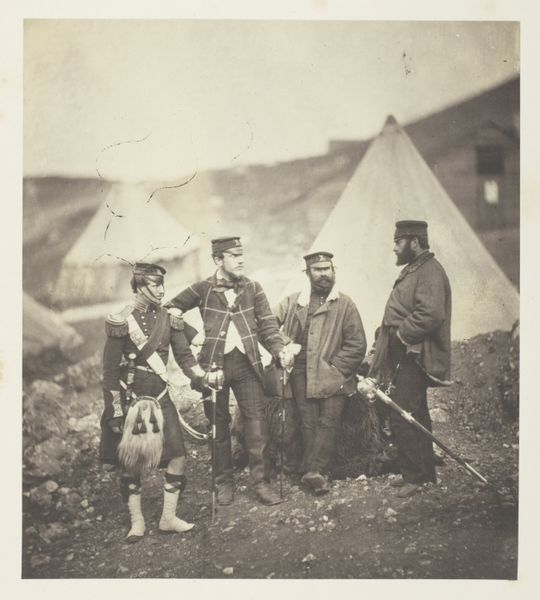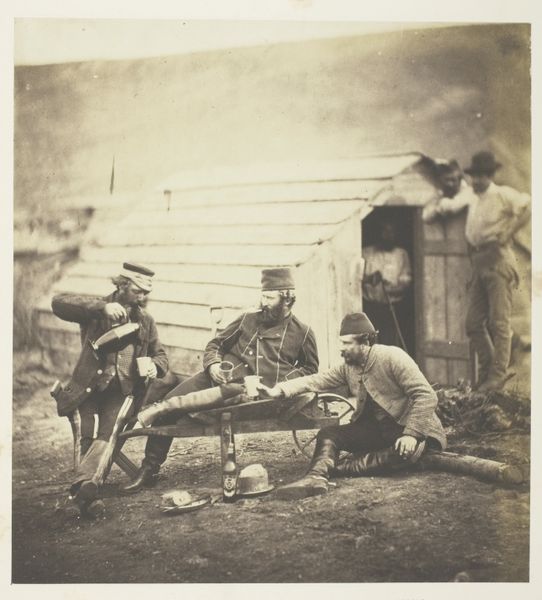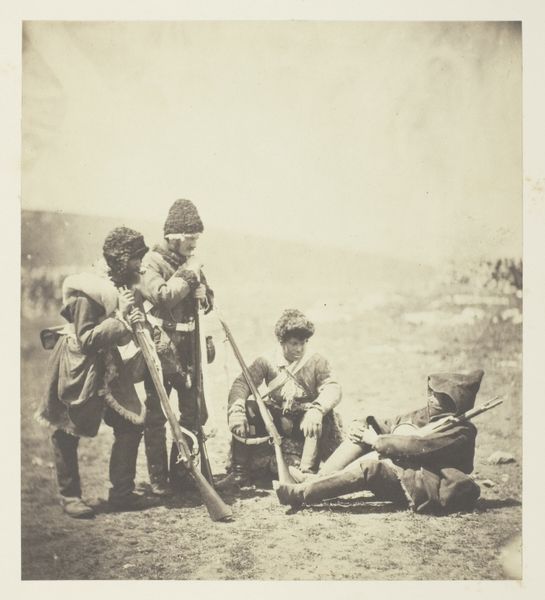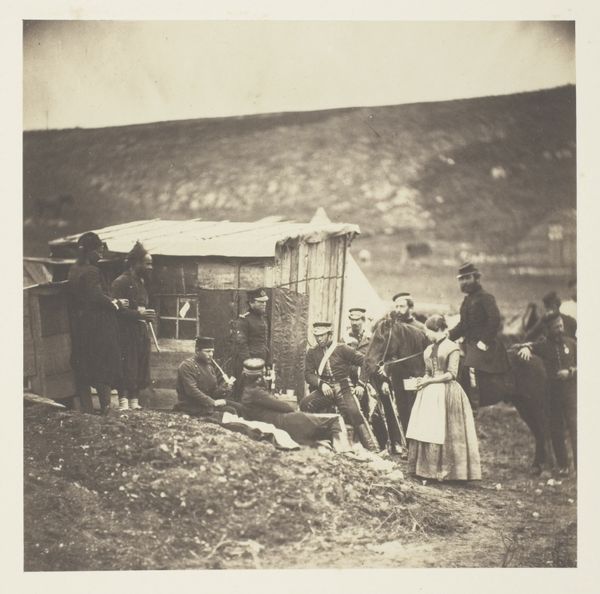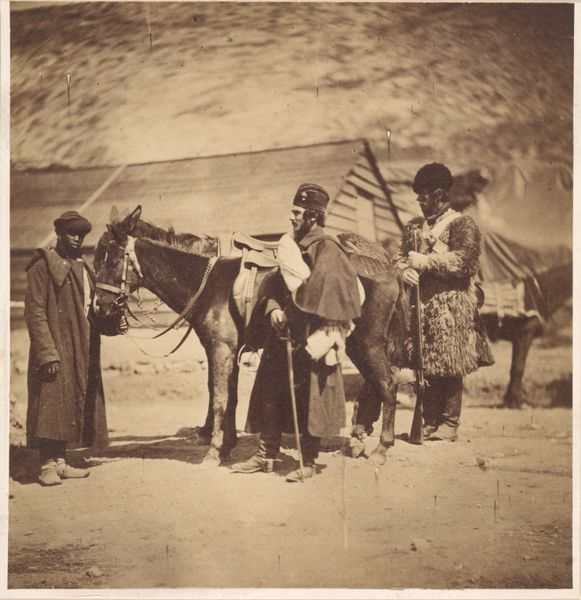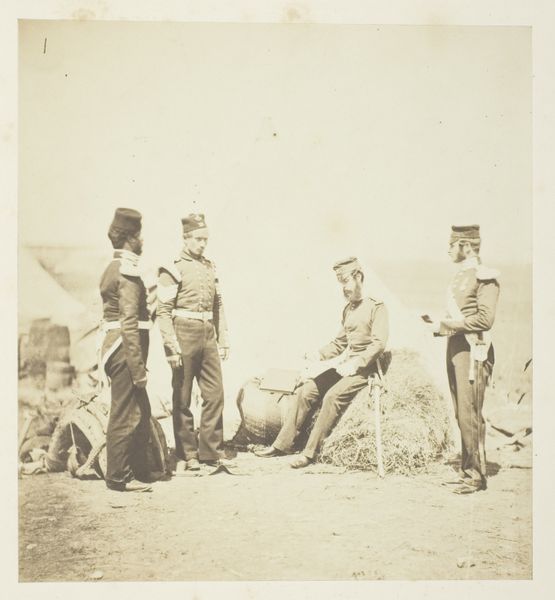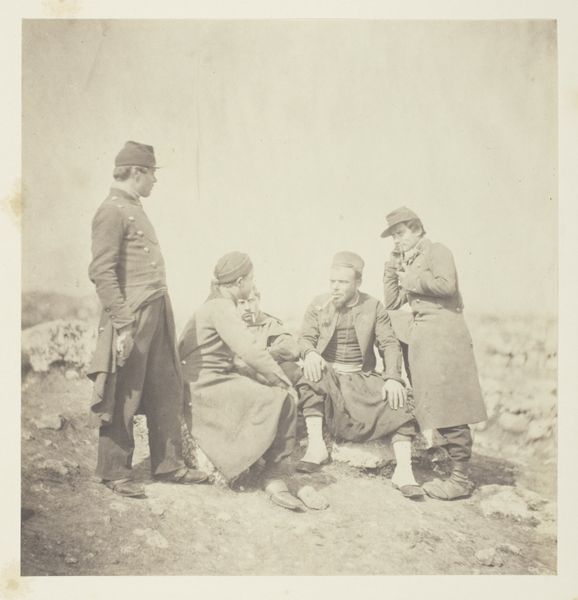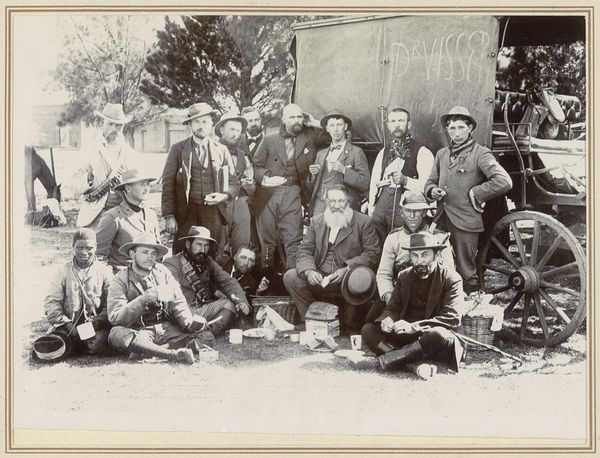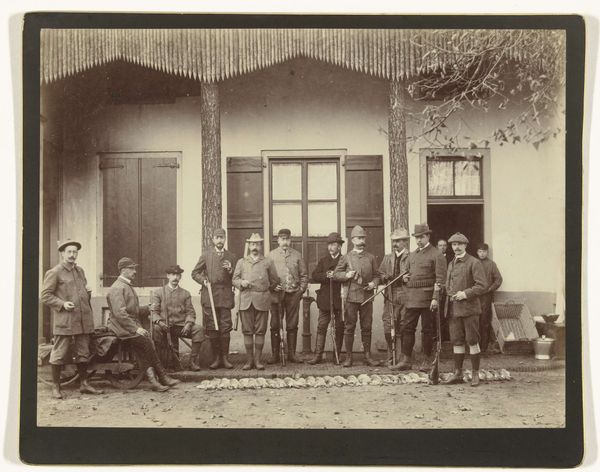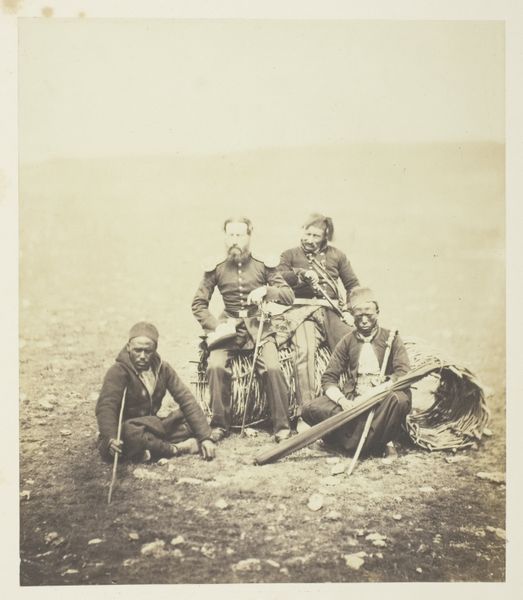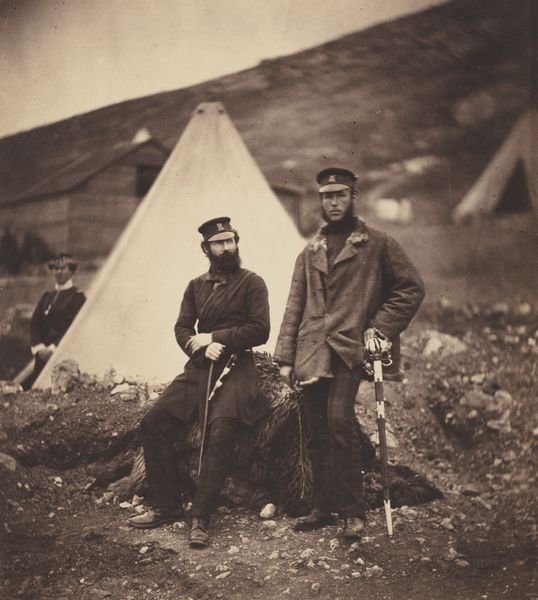
print, paper, photography, gelatin-silver-print
#
portrait
#
print photography
#
16_19th-century
# print
#
war
#
landscape
#
paper
#
archive photography
#
photography
#
england
#
group-portraits
#
gelatin-silver-print
#
academic-art
Dimensions: 18.6 × 16.2 cm (image/paper); 58.9 × 42.5 cm (mount)
Copyright: Public Domain
Editor: This is Roger Fenton’s "Officers of the 71st Highlanders" from 1855, a gelatin silver print currently housed at the Art Institute of Chicago. The figures look stoic. It seems more posed and intentional than documentary photography, which is what I expected from war photography of the era. How do you interpret this work? Curator: This photograph, taken during the Crimean War, offers a window into Victorian society's complex relationship with warfare and representation. Fenton was sent to document the war, but the limitations of early photography meant staging and careful selection were crucial. Note how the officers are positioned; the hierarchy is subtly enforced through posture and placement. What does this controlled representation tell us about how the British Empire wanted to portray itself? Editor: So, it's not necessarily showing the realities of war but crafting a specific narrative? Curator: Precisely. Consider the absence of the wounded, the impoverished, or the sheer brutality often associated with conflict. Instead, we see composed, dignified figures, reinforcing notions of British strength and order. It speaks to the propagandistic function photography could serve, even in its infancy. But also consider the silence around race in Victorian Britain. Editor: What do you mean? Curator: Think about who isn't in the frame. The enlisted men who bore the brunt of the fighting are glossed over or represented through officers who hold higher social positions. What unspoken stories are embedded in their carefully constructed image? Whose voices are we *not* hearing? Editor: That's a really interesting point. It makes you wonder about all the untold stories behind these seemingly straightforward images. Curator: Absolutely. And how this relates to contemporary debates around power, representation, and the ethics of documentary photography. Editor: I’ll definitely look at this differently now, understanding the choices and the historical context in the work!
Comments
No comments
Be the first to comment and join the conversation on the ultimate creative platform.
